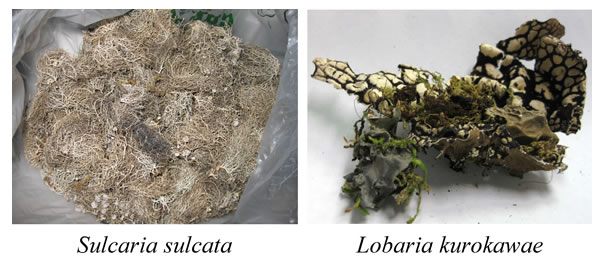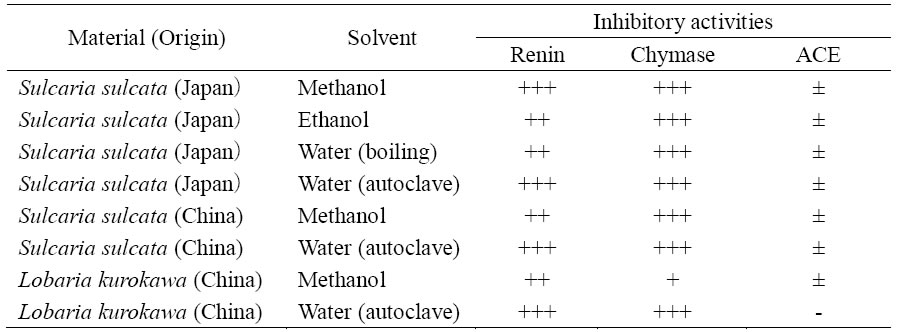Renin and chymase inhibitory activities of edible lichen, Sulcaria sulcata and Lobaria kurokawae
Description
In East and Southeast Asia, there are various food resources such as native agricultural and marine products and traditional fermented foods. These food resources are able to utilize as materials for functional foods and new processed foods. Unknown physiological active substances may be found from the foods produced by regionally specific materials, production methods and microorganisms. If we utilize these active substances as materials of functional foods, we can promote high value-addition to traditional agricultural products or conventional processed foods. On the other hand, the large-scale flow of population from farming villages to the cities and the increase in middle-income groups in the cities are occurring in these regions. In connection with it, diversification and quality improvement of agricultural products are demanded increasingly. In this study, renin and chymase inhibitory activities in foods were investigated. The activity promises inhibitory effect on elevated blood pressure.
We performed screening of the inhibitors from foods in East Asia. As results, it became clear that edible lichen, Sulcaria sulcata and Lobaria kurokawae (Fig. 1), contained the active substances. S. sulcata and L. kurokawae are used as foods in the partial area in Japan or China. Strong renin and chymase inhibitory activities exist in methanol, ethanol and water extracts of S. sulcata and L. kurokawae (Table 1). On the other hand, there extracts did not inhibit angiotensin converting enzyme (ACE). The inhibitory activities of the water extracts were retained after boiling or autoclave treatment (Table 1). Therefore, the inhibitory substances of the water extracts are very thermostable. Moreover, the water extracts decreased blood presser of spontaneous hypertensive rats (Table 2).
These results showed that newly functional food materials with renin and chymase inhibitory activities could be produced using edible lichen, S. sulcata and L. kurokawae. These food materials may be utilizable for the manufacture of nutrition foods with inhibitory effect on elevated blood pressure levels.
Figure, table
-
Fig. 1. Pictures of Sulcaria sulcata and Lobaria kurokawaem.
-
Table 1. Renin, chymase and ACE inhibitory activities of extracts of Sulcaria sulcata and Lobaria kurokawae
-
Table 2. Effects of blood presser levels of spontaneous hypertensive rats (SHR) for extracts of Sulcaria sulcata and Lobaria kurokawae
Data are means ± standard error. Blood pressure of SHR was measured 4 or 6 hours after administration.
- Affiliation
-
Japan International Research Center for Agricultural Sciences Biological Resources and Post-harvest Division
- Classification
-
Research B
- Research project
- Program name
- Term of research
-
FY 2013 (FY 2011-FY 2015)
- Responsible researcher
-
Nirasawa Satoru ( Biological Resources and Post-harvest Division )
Cheng Yongqiang ( China Agricultral University )
Takahashi Saori ( Akita Research Institute for Food and Brewing )
KAKEN Researcher No.: 10142184 - ほか
- Publication, etc.
-
Nirasawa, et al. (2014) "Renin inhibitor, chymase inhibitor or antihypertensive agent, and food product having renin inhibitory activity and/or chymase inhibitory activity". JP2015147736A
- Japanese PDF
-
2013_C05_A3_ja.pdf181.25 KB
2013_C05_A4_ja.pdf274.77 KB
- English PDF
-
2013_C05_A3_en.pdf148.9 KB
2013_C05_A4_en.pdf704.09 KB
- Poster PDF
-
2013_C05_poster.pdf455.57 KB



